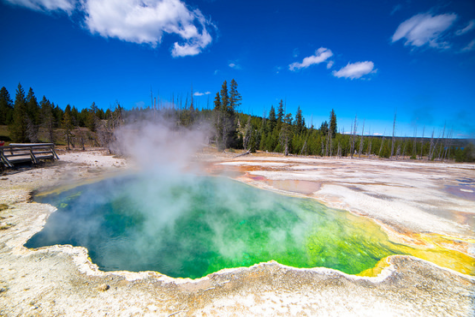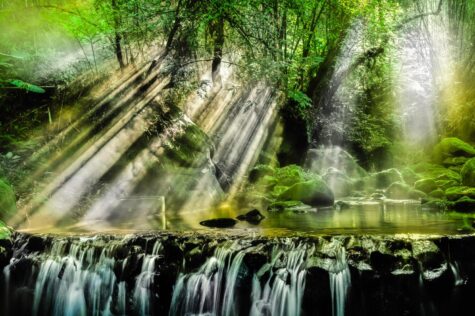Deep underground, Yellowstone supervolcano lays dormant
May 25, 2018

Hawaii’s recent volcanic activity is a reminder volcanoes are extremely dangerous, and can strike at any time.
On May 4, 2018, CBS News reported lava spewed out of Hawaii’s Mount Kilauea for the first time in over 30 years. The lava poured through roads and homes, displacing hundreds of families on its path to the ocean. While National Geographic ranked Mount Kilauea as the most dangerous volcano in the United States, the one found underneath Yellowstone National Park has earned a different name: supervolcano.
The main difference between a volcano and a supervolcano is the amount of matter expelled during an eruption. According to BBC, a supervolcano spews at least 1,000 cubic kilometers of matter as high as 30 kilometers into the air, enough ash to cover the Rockies in three feet of ash, and launched three times higher than Mount Everest. For comparison, a large volcano like Mount Kilauea releases about one cubic kilometer of ash on average.
On a global scale, volcanoes and supervolcanoes are dangerous because of the effect the ash they expel has on the environment. The United States Geological Survey said a layer of ash as thin as one millimeter could be a significant danger to crops and livestock. If plants were to survive the ash fall, they would then face significantly less sunlight than before due to the sun being blocked.
Luckily for humanity, the devastating potential held within super volcanoes has not been witnessed in over 74,000 years. Mount Toba, located in Indonesia, was the last known supereruption. Because of its location and the time period, BBC reports it had little effect on prehistoric humans and plants.
If the Yellowstone supervolcano were to erupt in the modern world, it’s impact would be catastrophic. Ash would be thrown as high as 30 kilometers into the air, which would then be spread around the world through atmospheric winds. A paper published in September 2014 estimated that its location near the center of the United States would cause ash to fall over the majority of the United States in some capacity.
Electronics, utilities, and roads would all be unusable for some time after an eruption, making cleanup and evacuation difficult. Cities, public buildings, and private property would all be damaged in some way, raising the price of rebuilding significantly. The CBC’s interactive yellowstone map estimates the total cost of repairs would be at least $1.01 trillion in the United States alone.
Besides the immediate damage caused by ash and lava, the atmospheric issues caused by over 1,000 cubic kilometers of pollutants being released into the sky would affect the entire world. According to Wired, the 1815 Mount Tambora eruption, which is the largest volcanic eruption in recorded history, released an estimated 175 cubic kilometers of ash. As a result of this massive eruption, temperatures around the world were significantly lowered for at least one year, causing the “Year Without a Summer” in 1816. If a supervolcano like Yellowstone were to erupt, it is likely that the earth’s temperature would be affected for at least several years, if not decades.
Some geologists argue Yellowstone is due, if not overdue, for an eruption. According to Vox, Yellowstone has erupted thrice before, 2.1 million years ago, 1.3 million years ago, and lastly 664,000 years ago. Fortunately, there is evidence to suggest an eruption is unlikely to happen soon, or even at all. Time Magazine reports the chances of an eruption within the next century is one in 10,000. Yellowstone is heavily monitored for activity, and geologists are capable of predicting eruptions several weeks in advance, according to the USGS.
While a supereruption is not likely to happen within the decade much less the century, volcanic events around the world show how much damage even the smallest eruption can do.


